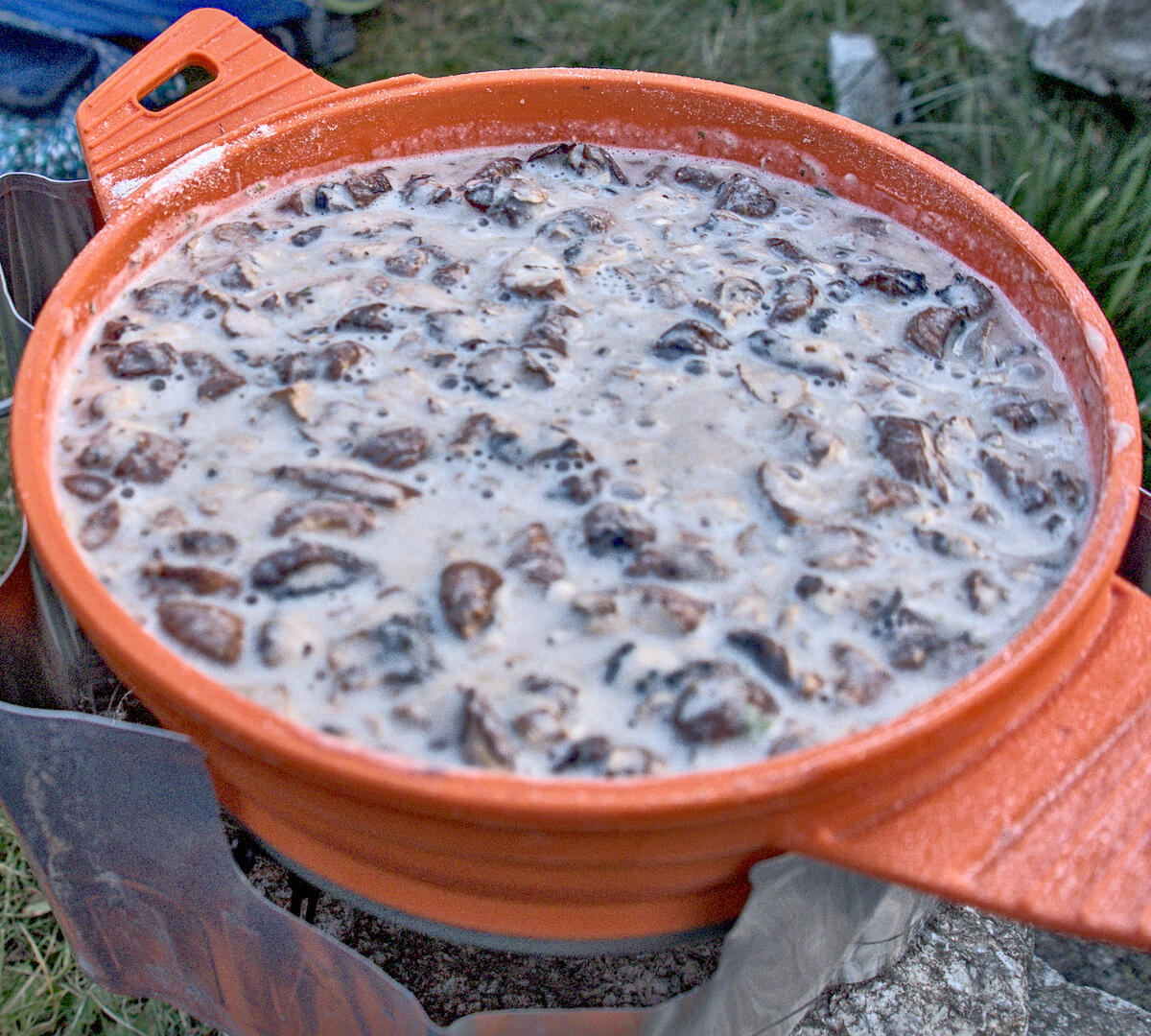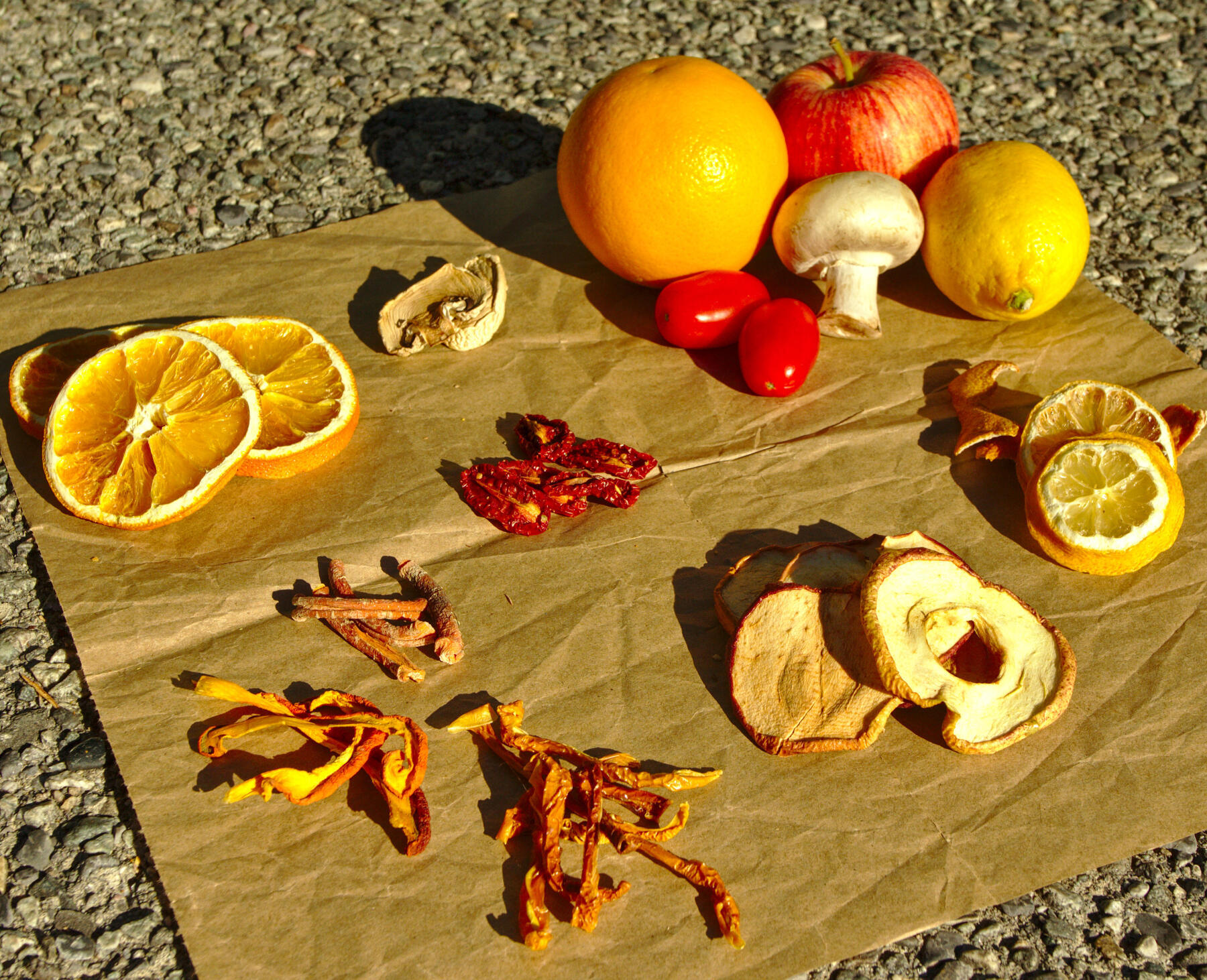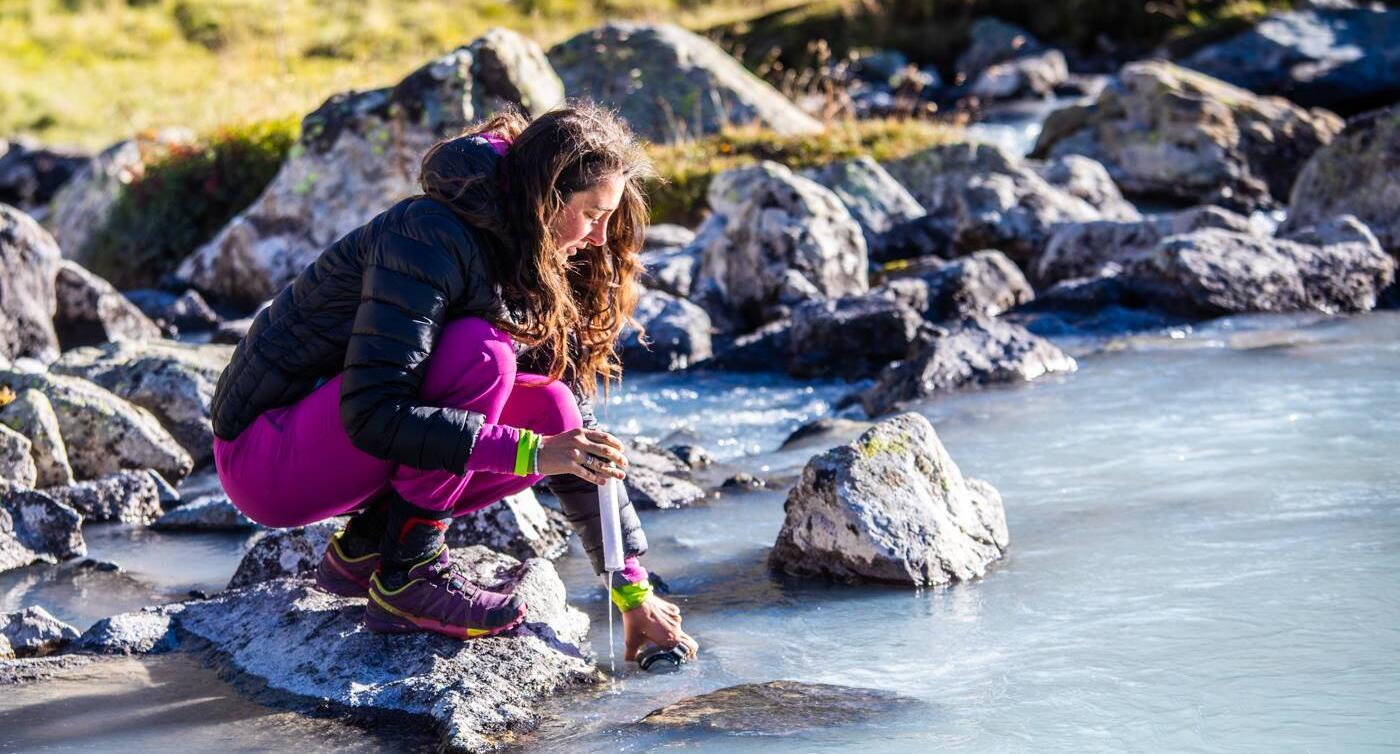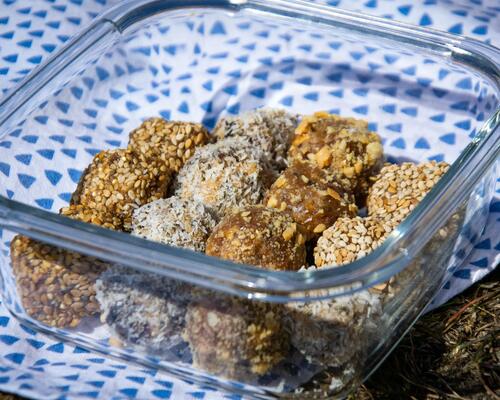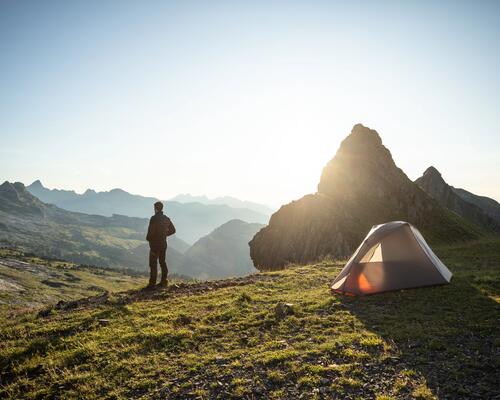PREPARATION
At home
1/ Mix the following ingredients in the most airtight container you have: potato starch, buckwheat cream, soy protein, miso and arrowroot. These ingredients are very stable and can be kept mixed for a very long time as long as they are not exposed to moisture.
2/ The mushrooms and garlic (but also some aromatic herbs, if you have some) should be dehydrated and kept separate. If you have a vacuum device, now is the time to use it!
How to dehydrate your food:
- Cut them into thin and regular slices.
- Place them on the drying screens of your dehydrator or on a sheet of baking paper in your oven at minimum heat (which can go down to 30°C in a dehydrator).
- You will have to wait for about 10 hours for the mushrooms to be quite dry.
Examples of approximate dehydration times:
> Radish, carrot, kale, potato, courgette, sweet pepper: 6 hours
> Apple, rhubarb, kiwi, mango, tomato, mushroom: 10 hours
> Cherry, pineapple, banana: 15 hours
> Grape, apricot: 25 hours
3/Keep the "toppings" separate, in another airtight bag.
At the bivouac
It's very easy and quick, which is not a luxury when you're hungry, it's cold or even raining and its starting to get dark!
You will need a pot and a stove or a wood fire to cook it all:
- In the pot, mix 1 part of the preparation with 3 parts of cold water.
- Heat the water until it boils, stirring very regularly.
- Then cook on a low heat for 5 minutes, while stirring.
- Sprinkle with your toppings to add a little crunch thanks to the kasha just before serving.
My recommendation:
View this recipe like a painter's canvas, a guide that should only be used to inspire you and make you want to customise it according to your taste and according to the vegetables and spices you have available. Everything is possible, the idea is to make it as much of a treat as possible (after all, at the end of a day's walking, you will have earned it!).

